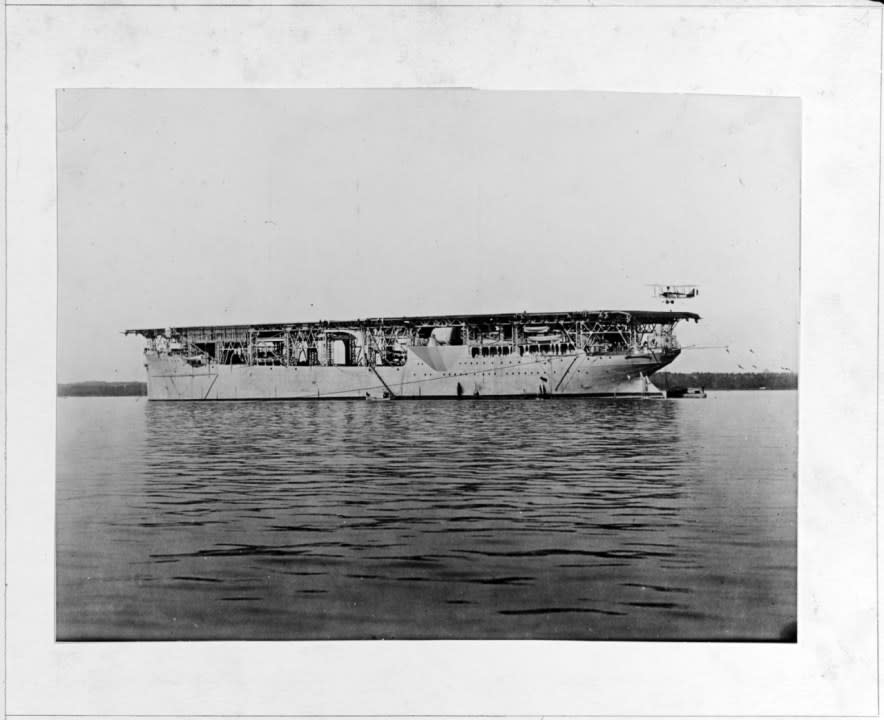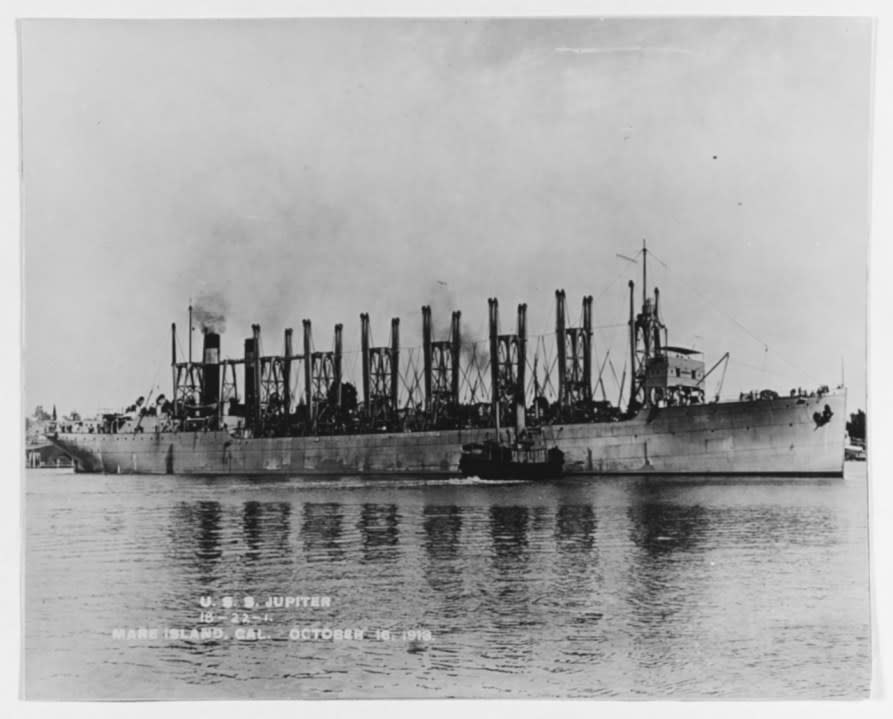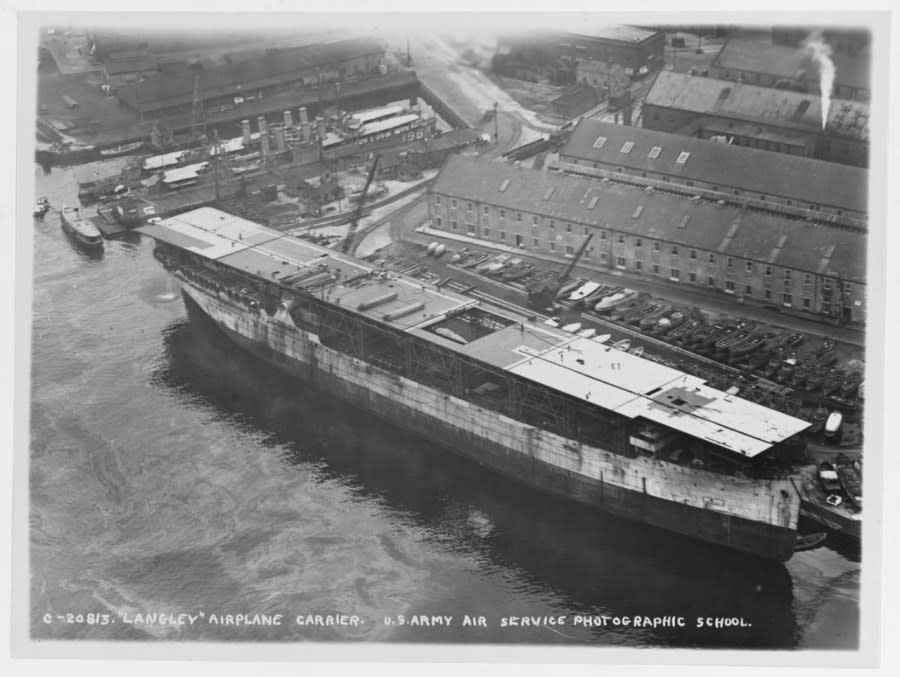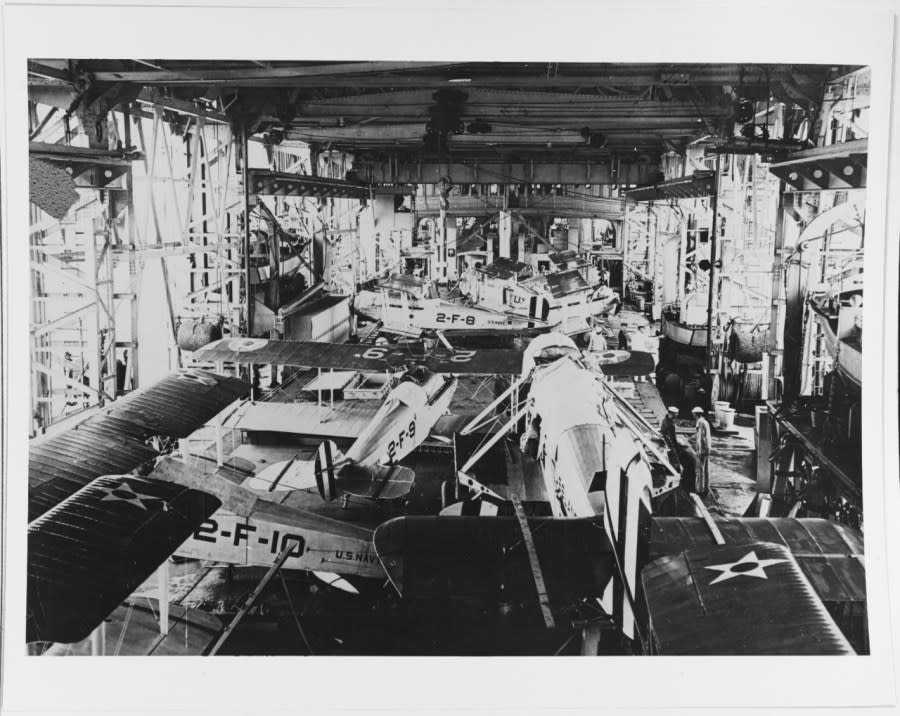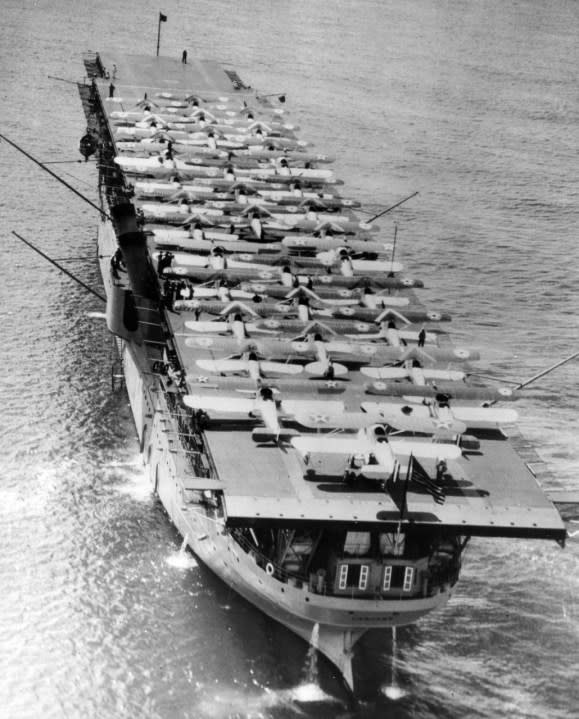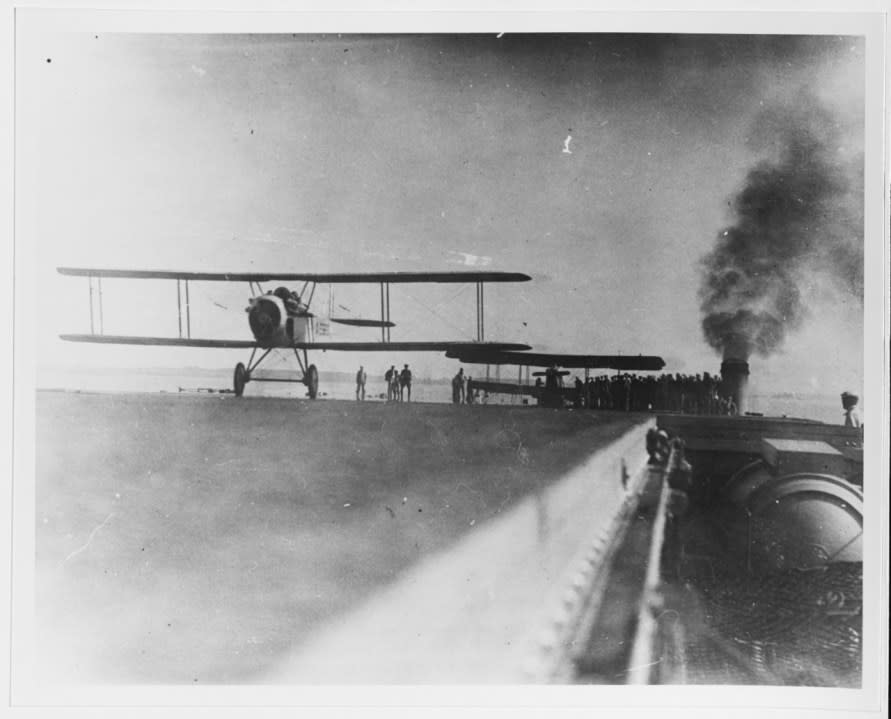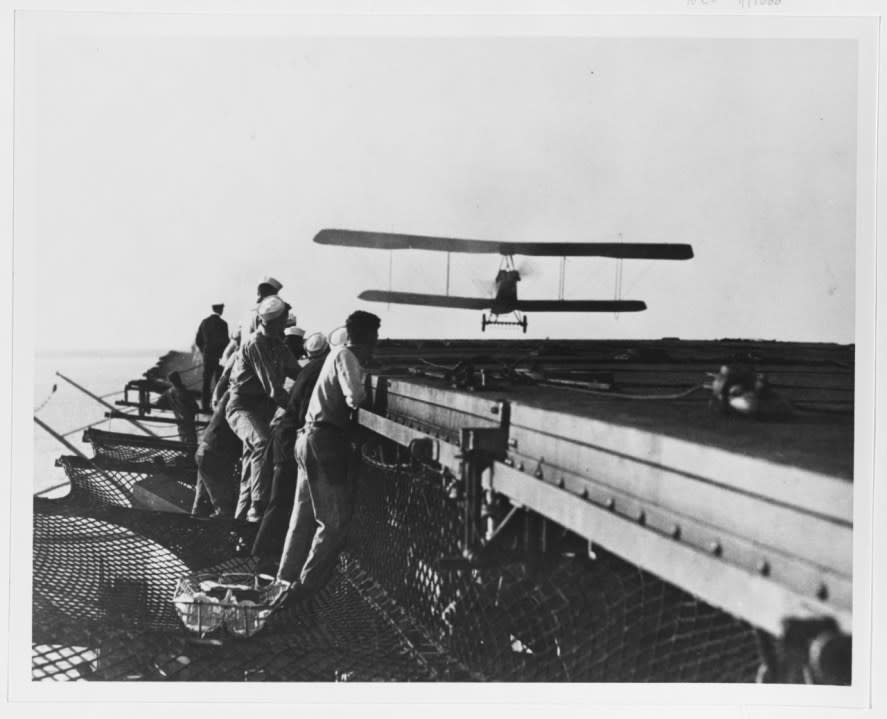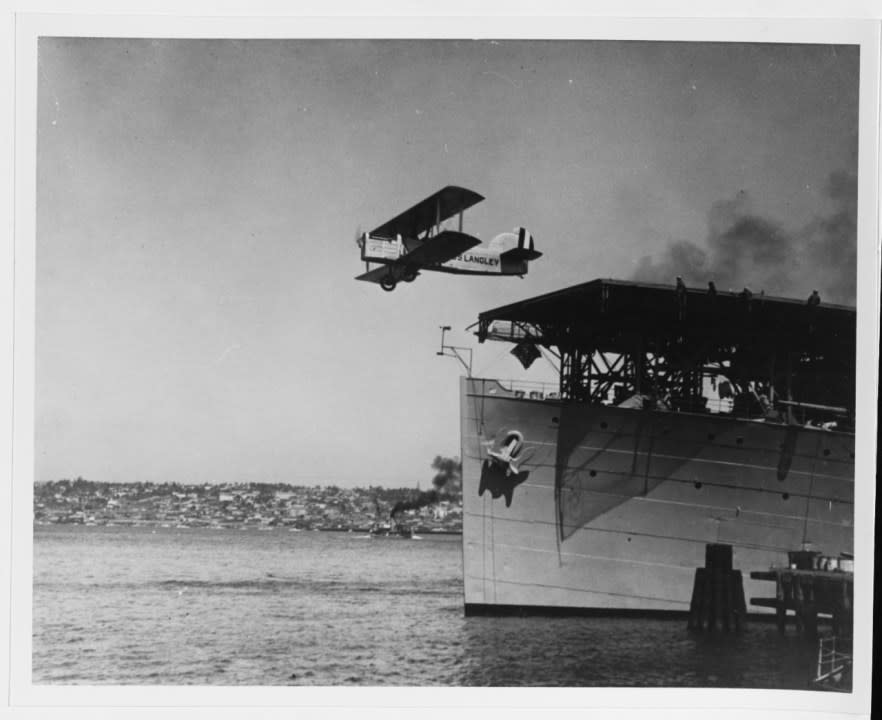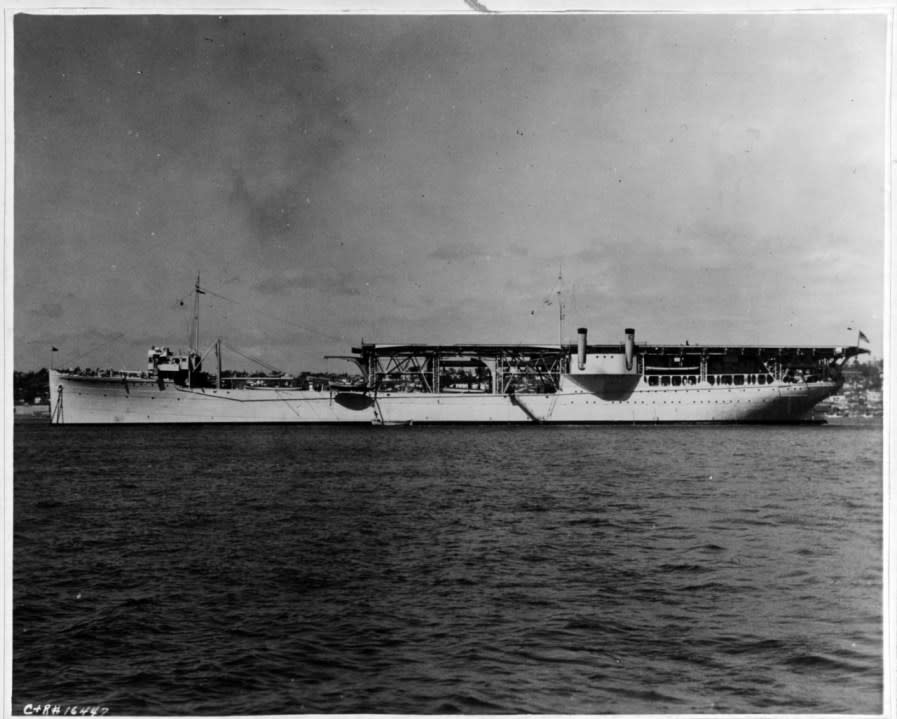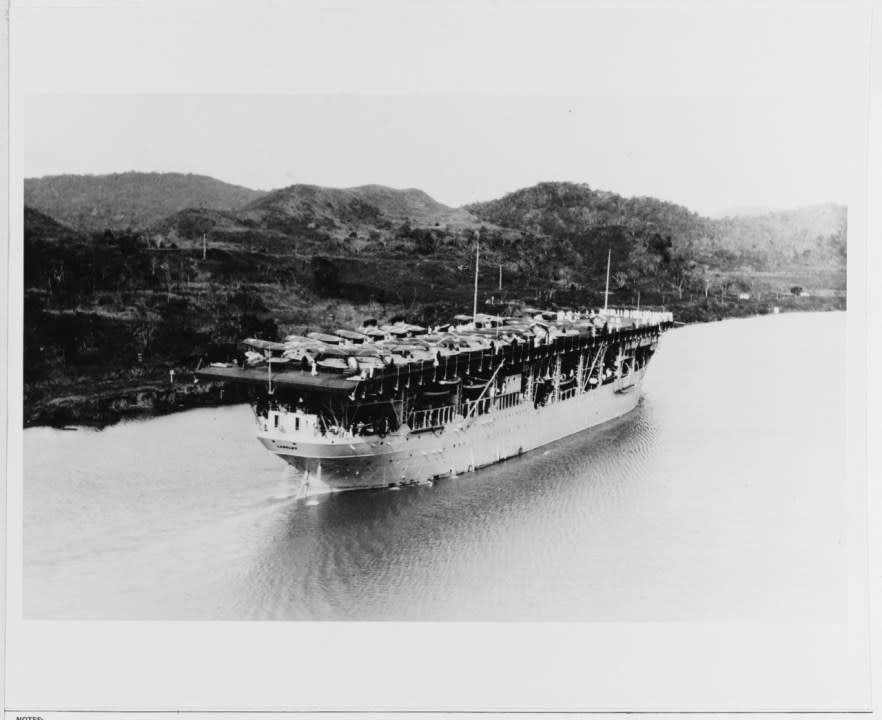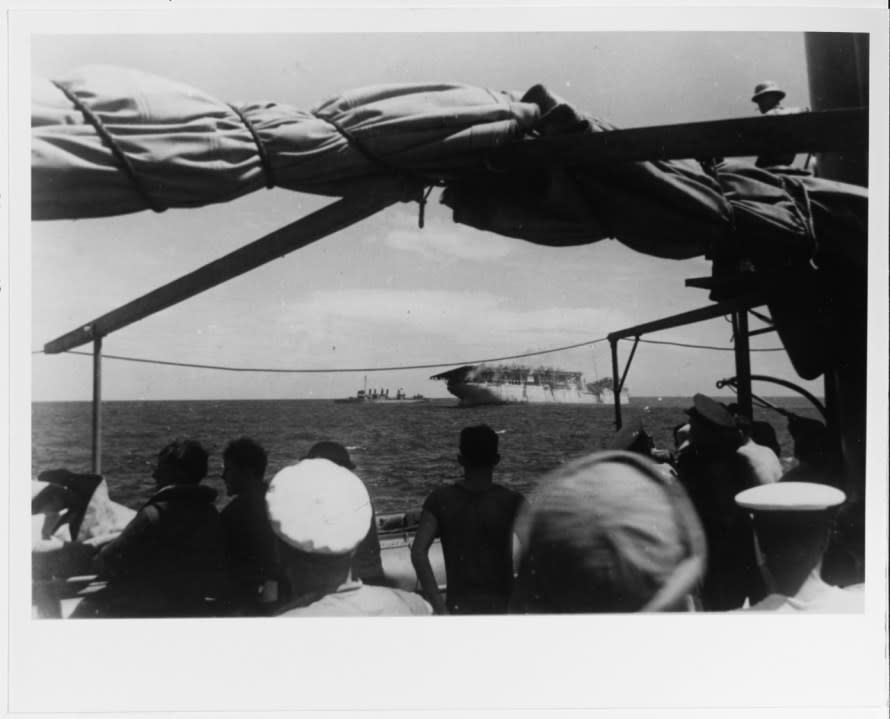On this date: America’s 1st aircraft carrier
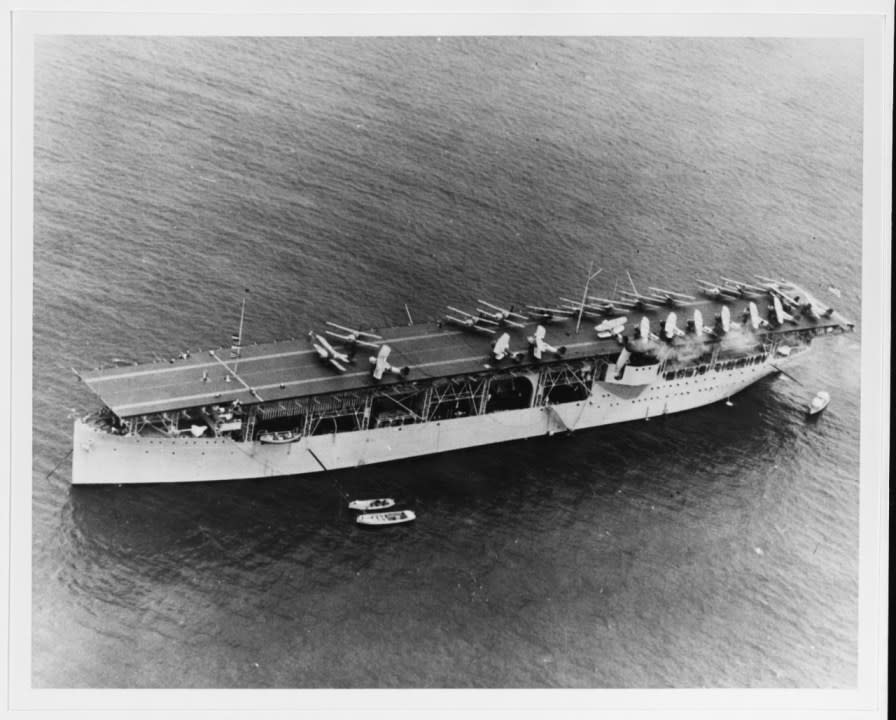
- Oops!Something went wrong.Please try again later.
(WHTM) — They called her “the covered wagon.”
On March 20, 1922, the U.S.S. Langley, CV-1, was commissioned as the first aircraft carrier of the United States Navy. But she was not built from scratch. This whole flying-an-airplane-off-a-ship thing was still pretty new, and it made sense to convert some other ship into a carrier for the first tests.
Get daily news, weather, breaking news and alerts straight to your inbox! Sign up for the abc27 newsletters here
With World War I just recently ending, the Navy had quite a few ships available for conversion.
The ship they chose, the U.S.S. Jupiter, was a collier-a vessel designed for hauling coal to refuel warships. Oil was rapidly replacing coal as the fuel for navy vessels, so she was, in essence, a ship in search of a mission. Her coal bunkers would provide plenty of storage space for airplanes, parts, and fuel.
Besides that, Jupiter had already scored a first in naval technology, when she became the first ship to be fitted out with a turbo-electric drive, with electric motors powered by turbines directly connected to the propeller shafts, removing the need for reduction gears. It was mechanically simpler and lighter in weight than previous systems and would see use in a lot of ships after Jupiter.
n the aftermath of World War I, the collier Jupiter was converted into the U.S. Navy’s first aircraft carrier, and recommissioned Langley (CV-1) on 20 March 1922. At anchor, with an Aeromarine 39-B airplane landing on her flight deck, circa 1922 (NHHC) Collier Jupiter off the Mare Island Navy Yard, California, 16 October 1913. (NHHC) Under reconstruction from the collier JUPITER at Norfolk Navy Yard, Portsmouth, Virginia, circa late 1921. Note boat storage yard ashore, and USS GEORGE E. BADGER (DD-196) in background. (NHHC) Aircraft in the ship’s hangar, during the 1920s. The larger plane in the foreground is a Douglas DT torpedo bomber, with its wings removed. Other aircraft are Vought VE-7s of Fighting Squadron Two (VF-2).(NHHC) In Pearl Harbor, Oahu, Hawaiian Islands, with 34 planes on her flight deck, May 1928. Note booms rigged out from her sides. (NHHC) VE-7 and Aeromarine on flight deck, circa 1922. (NHHC) Aeromarine 39-B airplane approaching the flight deck of USS Langley (CV-1) during landing practice, 19 October 1922. Docked at the carrier pier at Naval Air Station, North Island, San Diego, California, with a Douglas DT-2 airplane taking off from her flight deck. This photo may have been taken during catapult tests in 1925. (NHHC) U.S.S. Langley 1922 (NHHC) Langley photographed in 1937, following conversion to a seaplane tender. Passes through the Panama Canal during the late 1930s, with other U.S. Navy Fleet units. (NHHC) Langley being abandoned after receiving crippling damage from Japanese bombs, south of Java, 27 February 1942. USS Edsall (DD-219) is standing by off Langley’s port side. Photographed from USS Whipple (DD-217).(NHHC)
Jupiter went into drydock in 1920, and came out in 1922 with a new name, new mission, and new configuration. She’d been (re)named after Samuel Langley, the third secretary of the Smithsonian Institution and an aviation pioneer.
The equipment used for loading and unloading coal had been stripped away. In its place, a flight deck stretched from stem to stern over the ship’s original main deck. (This is where the “covered wagon” nickname comes from.) The open space between the two was where aircraft stored in the holds were brought up to the main deck, prepared for flight, and then rode an elevator to the flight deck.
July 29, 1958: National Aeronautics and Space Administration is created
The Langley only made 15 knots, too slow to keep up with the fleet, but her job was to test equipment and techniques for the new field of naval aviation. Take-off techniques, arrestor gear for landing, best flight approaches for landing, night landing, bad weather flying, and ways to speed up the turnaround of aircraft in a battle situation, were just some of the things tried and tested on the ship.
It was on the Langley that the landing signal officer was established to help guide pilots to safe landings on a pitching flight deck. Many of the practices and procedures established on the Langley survive in the navy to this day. (The ship also helped demonstrate the potential of air power in fleet exercises-including, in 1928, successfully executing a surprise attack on Hawaii…)
By the 1930s new, larger, and faster aircraft were joining the fleet. In 1937 a large part of her forward flight deck was removed, and Langley was converted into a seaplane tender with a new hull number AV-1.
How many ships have been named U.S.S. Pennsylvania?
Langley was stationed in the Philippines when Pearl Harbor was attacked. On Feb. 27, 1942, she was transporting a cargo of aircraft. About 74 miles south of Java, the ship was spotted and bombed by Japanese aircraft. Sixteen crewmen were killed, the engines shut down, and she began to list. The remaining crewmen were transferred to other ships, and the Langley was scuttled with torpedoes.
On Aug. 31, 1943, a new U.S.S. Langley was commissioned and would serve for 20 years.
For the latest news, weather, sports, and streaming video, head to ABC27.
